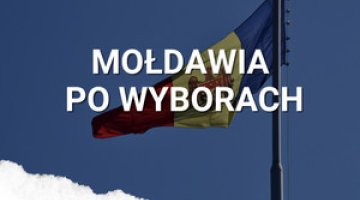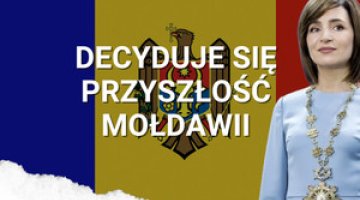Failed constitutional referendum in Moldova
The attempt made by the four-party coalition, the Alliance for European Integration (AIE), which has been ruling since September last year, to change how the country’s president is elected has ended in failure. A constitutional amendment initiated by the AIE which would have provided for direct presidential election, instead of the current system of election by parliament, failed because the turnout in the constitutional referendum which took place on 5 September was too low. This means that the upcoming parliamentary elections will most probably not produce a stable government in Chisinau.
A constitutional-political impasse in Moldova
Although the majority of those who voted in the 5 September referendum (87.5%) declared themselves in favour of introducing direct presidential elections, the turnout did not exceed the required threshold of one-third of the voters, and the AIE’s attempt to change the constitution ended in failure.
The change to the constitution which the AIE suggested was aimed at breaking the constitutional-political impasse which Moldova has found itself in since April 2009. This deadlock is the result of the confluence of three circumstances: Article 78 of the Moldovan constitution provides for the country’s president is to be elected by parliament with a qualified majority of three-fifths, and for the dissolution of parliament if a president cannot be elected; the more or less equal division of the electorate between sympathisers and opponents of the Communist party; and the depth and bitterness of the political conflict between the Communist party and the AIE (which brings together one social-democratic and three liberal parties). Neither camp could garner a three-fifths majority in parliament, and agreeing on a compromise candidate proved impossible, both after last April’s elections and after the new elections held three months later.
The attempt which the AIE made to change the constitution encountered fierce resistance from the Communist party; they appealed for a boycott of the referendum, trying to transform it into a plebiscite on the popularity of the ruling camp. The Communists were against the introduction of direct presidential elections mainly because they do not have a popular candidate who could compete with the leading politicians of the AIE – the leader of the Democratic Party Marian Lupu, and the current prime minister and leader of the Liberal-Democratic Party Vladimir Filat. The popular leader of the Communist Party (PCRM) Vladimir Voronin cannot stand again after two successive terms as president in 2001-2009. Furthermore, the Communists favour new parliamentary elections as soon as possible, and fear that if the AIE had won the referendum, they would not have dissolved parliament.
The political consequences of the referendum’s failure
The failure of the referendum means that after the next round of parliamentary elections, which will most probably take place this November, no winning majority will be able to elect a president, and one year after the dissolution of the current parliament, new elections will have to be announced. The result of the referendum shows that neither the Communists nor the parties of the AIE can count on achieving a majority which would guarantee them three-fifths of the seats in parliament. Around 800,000 voters ignored the Communists’ call and participated in the referendum. This is more or less the same number who voted for the parties comprising the AIE in the last elections. Because the actual number of active voters in Moldova is around 1.5 million, this means that around 700,000 of them did heed the Communists’ appeal, and did not go to vote. The number of voters who boycotted the referendum more or less corresponds to that amount of voters who are the Communist party’s base, according to polls.
The political consequences of the AIE’s failure, however, are not unambiguously bad for the parties of the ruling coalition. If the referendum had succeeded, this would most likely have led to the break-up of the AIE, as both the Alliance’s main party leaders, Filat and Lupu, would have competed for the presidency. The parties of the AIE would have gone into the parliamentary elections in a state of hostile mutual conflict, which would have improved the electoral chances of the Communists. On the other hand, the referendum’s failure will probably lead to the consolidation of the Alliance, because the parties which compose it have been shown that the Communists still have a real chance of defeating them in parliamentary elections.
The success which the PCRM has achieved by blocking the constitutional reforms proposed by the AIE strengthens the position of its current leader, Vladimir Voronin, and minimises the likelihood of the party’s leadership changing. At the same time, the person of Voronin himself is the main hindrance to any change of political alliances in Moldova, which would involve the social-democratic party of Lupu breaking with the liberal-democratic parties and forming a new centre-left coalition with the PCRM.
A very small chance exists that after the elections, the parties of the AIE would succeed in coming to an understanding with the Communists regarding changing the procedure for electing the president, which would make it impossible for a minority losing the parliamentary elections to force early elections by blocking the election of the president. Similarly small are the chances for forming a centre-left coalition, although that cannot be completely ruled out, if the Communist party and the PD win a combined total of 61 seats in the next parliament.
As a consequence, Moldova can look forward to a period of political instability, with no hope for breaking through the deadlock, because of the depth of fundamental political divide(democrats/Westerners versus Communists/pro-Russians), and the more or less equal forces of both camps.





